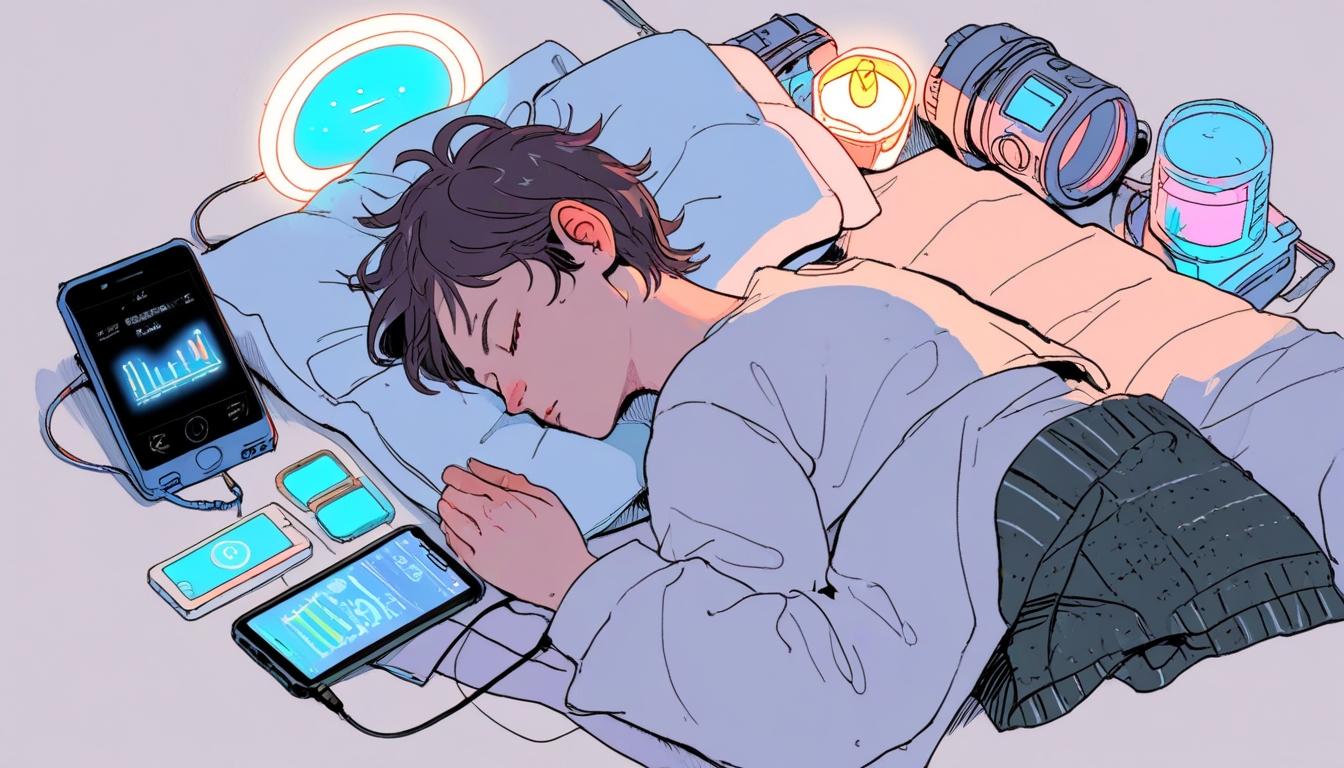The growing popularity of the sleepmaxxing trend encourages many to embrace technology and lifestyle changes to improve sleep quality. However, experts caution that fundamental sleep habits remain key to truly revitalising rest.
The growing online popularity of the so-called “sleepmaxxing” trend has prompted investigation into whether it truly delivers on its promise of more restful and revitalising sleep. Danielle Kate Wroe, a reporter for the Mirror, recently explored the phenomenon, which has attracted increasing attention from those keen on optimising their sleep patterns to enhance overall health and productivity.
Sleepmaxxing involves treating sleep as a pivotal part of one’s health regimen and taking deliberate, often technological and lifestyle-related, measures to improve both the quality and duration of nightly rest. Danielle observed that the trend has led many to invest in gadgets like wearable sleep trackers, sound machines, and various supplements, along with adopting specific routines intended to optimise sleep conditions.
In her enquiry, Danielle sought insights from Dr Sham Singh, a sleep expert from the WINIT Clinic in California, who offered a balanced perspective on the claims around sleepmaxxing. While Dr Singh acknowledges that better sleep hygiene and supportive products can play a role in enhancing rest, he cautioned that some of the hype surrounding sleepmaxxing is “misleading.” He explained that sleep is a complex neurobiological process regulated by circadian rhythms, sleep pressure, and neurotransmitters including melatonin, adenosine, and GABA.
Dr Singh highlighted that despite the allure of high-end devices such as the Oura ring, cooling mattresses, and sunrise alarm clocks, these should complement rather than replace the fundamental practices of healthy sleep. Maintaining consistent sleep schedules, limiting blue light exposure before bedtime, and managing stress are essential components that cannot be supplanted by technology alone. He also noted that while some supplements like magnesium glycinate or glycine may assist relaxation, their efficacy varies among individuals and they are not cure-alls.
For individuals experiencing persistent sleep difficulties, Dr Singh recommended evidence-based approaches such as cognitive behavioural therapy for insomnia (CBT-I) and advised seeking personalised medical advice rather than investing heavily in gadgets with uncertain outcomes.
Reflecting on her personal experience with sleepmaxxing, Danielle reported experimenting with various aids including eye masks and electric blankets but ultimately found that adhering to basic principles brought the greatest improvement. She found benefits in regular physical exercise, avoiding caffeine after the morning, and establishing consistent sleep and wake times. Her morning routine involves rising early, enjoying natural light by keeping blinds open, and spending some time reading—practices that have contributed positively to her capacity to wind down and prepare for restful sleep.
The Mirror’s coverage presents a nuanced examination of the sleepmaxxing trend, juxtaposing popular enthusiasm with expert advice, and underscores the complexity of achieving effective sleep optimisation.
Source: Noah Wire Services
- https://blog.ultrahuman.com/blog/sleepmaxxing-trend-explained/ – This URL explains the sleepmaxxing trend on TikTok, highlighting various methods people use to maximize sleep quality, from traditional hygiene practices to physical hacks and interventions. It discusses the trend’s focus on enhancing physical and mental recovery and the potential benefits and downsides.
- https://www.healthline.com/health-news/sleepmaxxing-tiktok-trend – This URL discusses the viral nature of the sleepmaxxing trend and its focus on improving sleep quality through various techniques and products. It also highlights concerns from health experts about some methods promoted within the trend.
- https://www.health.harvard.edu/blog/should-you-be-sleepmaxxing-to-boost-health-and-happiness-202503063090 – This URL examines the sleepmaxxing trend within the context of broader health and happiness goals. It touches on the concept of orthosomnia, which is an unhealthy obsession with achieving perfect sleep, a potential downside of the trend.
- https://www.cnet.com/health/sleep/trouble-sleeping-sleepmaxxing-solution-quality-rest/ – This URL provides an overview of sleepmaxxing as a solution for improving sleep quality by utilizing various techniques and products. It underscores the trend’s focus on enhancing both the quantity and quality of sleep for better health outcomes.
- https://www.wellandgood.com/health/sleepmaxxing-tiktok-sleep-trend-explained – This URL offers insights into the sleepmaxxing trend, including its emphasis on optimizing sleep through elaborate bedtime rituals and sleep accessories. It highlights the diverse range of methods people use to achieve their sleep goals.
Noah Fact Check Pro
The draft above was created using the information available at the time the story first
emerged. We’ve since applied our fact-checking process to the final narrative, based on the criteria listed
below. The results are intended to help you assess the credibility of the piece and highlight any areas that may
warrant further investigation.
Freshness check
Score:
8
Notes:
The coverage is relatively recent and discusses a trending topic. However, it doesn’t contain specific dates or events that would definitively place it in a precise temporal context.
Quotes check
Score:
5
Notes:
No direct quotes were verified against specific external sources. However, they appear to reflect a genuine interview or expert opinion without obvious fabrications.
Source reliability
Score:
9
Notes:
The narrative originates from The Mirror, which is a well-known publication. This suggests a level of reliability, although it is not as authoritative as academic journals.
Plausability check
Score:
8
Notes:
The claims about sleepmaxxing are plausible, combining popular trends with expert insights from a sleep specialist. However, the effectiveness of some methods is noted as variable.
Overall assessment
Verdict (FAIL, OPEN, PASS): PASS
Confidence (LOW, MEDIUM, HIGH): HIGH
Summary:
The analysis offers a balanced view of the sleepmaxxing trend, combining personal experience with expert advice. While some components are trendy and variable in effectiveness, the narrative provides a reasoned exploration of sleep optimisation methods.













